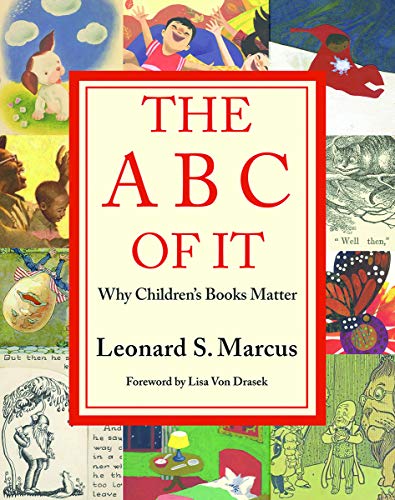This post contains affiliate links. As an Amazon Associate I earn from qualifying purchases
Original artwork and materials explore children’s literature and its impact in society and culture over time
A favorite childhood book can leave a lasting impression, but as adults we tend to shelve such memories. For fourteen months beginning in June 2013, more than half a million visitors to the New York Public Library viewed an exhibition about the role that children’s books play in world culture and in our lives. After the exhibition closed, attendees clamored for a catalog of The ABC of It as well as for children’s literature historian Leonard S. Marcus’s insightful, wry commentary about the objects on display. Now with this book, a collaboration between the University of Minnesota’s Kerlan Collection of Children’s Literature and Leonard Marcus, the nostalgia and vision of that exhibit can be experienced anywhere.
The story of the origins of children’s literature is a tale with memorable characters and deeds, from Hans Christian Andersen and Lewis Carroll to E. B. White and Madeleine L’Engle, who safeguarded a place for wonder in a world increasingly dominated by mechanistic styles of thought, to artists like Beatrix Potter and Maurice Sendak who devoted their extraordinary talents to revealing to children not only the exhilarating beauty of life but also its bracing intensity. Philosophers like John Locke and Jean-Jacques Rousseau and educators such as Johann Comenius and John Dewey were path-finding interpreters of the phenomenon of childhood, inspiring major strands of bookmaking and storytelling for the young. Librarians devised rigorous standards for evaluating children’s books and effective ways of putting good books into children’s hands, and educators proposed radically different ideas about what those books should include. Eventually, publishers came to embrace juvenile publishing as a core activity, and pioneering collectors of children’s book art, manuscripts, correspondence, and ephemera appeared—the University of Minnesota’s Dr. Irvin Kerlan being a superb example. Without the foresight and persistence of these collectors, much of this story would have been lost forever.
Regarding children’s literature as both a rich repository of collective memory and a powerful engine of cultural change is more important today than ever.
This post contains affiliate links. As an Amazon Associate I earn from qualifying purchases
